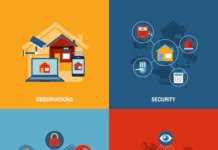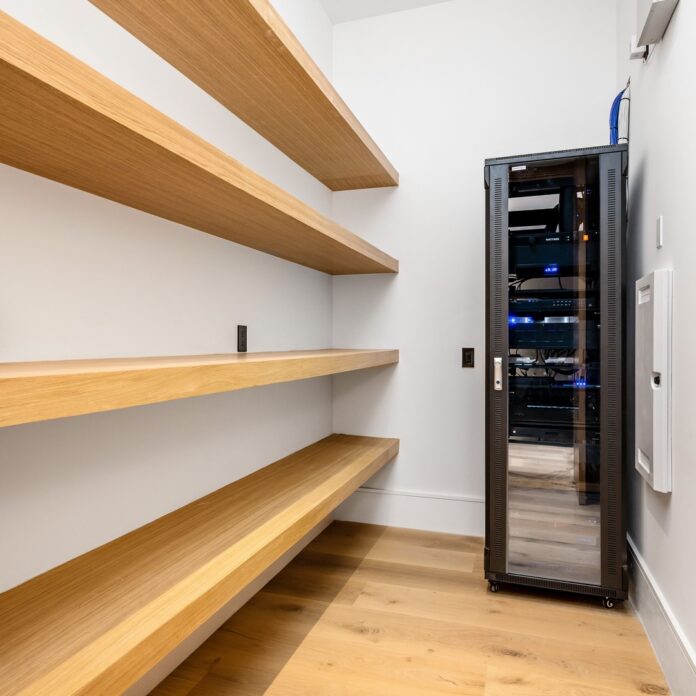Running a successful home business requires more than just great ideas and determination. Behind every thriving operation lies a robust technological foundation that can handle your growing needs, protect your valuable data, and keep your business running smoothly around the clock.
Many entrepreneurs underestimate the importance of proper server infrastructure until they face their first major system failure or security breach. By then, the cost of downtime and lost data often far exceeds the investment required for a well-planned server setup from the start. Make sure you properly prepare by setting up servers for your home business the right way.
Consider Your Technology Needs
Your server requirements depend entirely on your business model and growth projections. A freelance graphic designer may only need a simple file server for backup and storage. At the same time, an e-commerce startup might require multiple servers to handle inventory management, payment processing, and customer databases. Even home-based businesses aren’t too small for a data center if they rely heavily on technology to manage operations or store critical data.
Start by evaluating your current and projected needs. Tower servers work well for basic file sharing and small databases, offering easy maintenance and expansion. Rack-mounted servers provide increased power and density, but they require proper cooling and a suitable rack infrastructure. For businesses expecting rapid growth, blade servers offer maximum performance in minimal space.
Some entrepreneurs choose cloud-based solutions initially, but many find that dedicated on-premise servers provide better control, security, and long-term cost savings. Hybrid approaches combine both local and cloud resources, giving you flexibility while maintaining core operations in-house.
Lock In a Reasonable Budget
Server costs vary dramatically based on your requirements, but planning prevents expensive surprises later.
Factor in ongoing expenses beyond the initial hardware purchase. Software licenses, maintenance contracts, electricity consumption, and eventual upgrades all impact your total cost of ownership. Many businesses find that spending slightly more upfront on quality components saves money over time through reduced downtime and longer equipment lifespans.
Get the Right Servers
Selecting appropriate hardware requires balancing performance, reliability, and cost. Processing power matters most for applications like video editing, data analysis, or running multiple virtual machines. Memory capacity becomes critical when supporting a large number of simultaneous users or extensive databases.
Storage needs also vary significantly by business type. A photography studio requires vast amounts of fast storage for high-resolution images, while a consulting firm might need less capacity but higher reliability for client documents.
Set Up Server Racks
Professional server installation requires proper rack infrastructure, especially as your business grows. Wall-mounted racks work well for companies with limited floor space, while full-height racks provide maximum capacity for larger operations. Consider portable racks if you might relocate your business or need to access equipment from multiple sides for maintenance.
You can also design your own custom server rack configuration to fit your specific space and equipment needs. This customization proves particularly valuable for home businesses where standard rack sizes might not work in converted basements or spare rooms.
Maximize Airflow and Cooling
The importance of proper data center cooling is high. It extends equipment life and prevents costly failures.
Design your rack layout with airflow in mind. Hot-aisle/cold-aisle configurations separate intake and exhaust airflows, improving cooling efficiency. Ensure adequate clearance around equipment for air circulation, and avoid blocking ventilation openings with cables or other equipment.
Room-level cooling might require upgrading your HVAC system or adding dedicated air conditioning units. Calculate heat loads based on your equipment specifications, then add capacity for future expansion. Redundant cooling systems prevent single points of failure that could shut down your entire operation.
Choose an Operating System
Consider your staff’s technical expertise when making this decision. Windows Server requires less specialized knowledge for basic administration, while Linux offers more flexibility but demands greater technical skills. Some businesses run multiple operating systems on different servers to optimize each system for its specific role.
Virtualization platforms, such as VMware or Hyper-V, allow you to run multiple operating systems on a single hardware platform. This approach maximizes hardware utilization and provides flexibility for testing new applications or maintaining legacy systems.
Connect All the Cables
Proper cabling prevents network bottlenecks and simplifies troubleshooting. Label every cable clearly while setting up servers for your home business to avoid confusion during maintenance or expansion.
Power distribution requires careful planning to prevent overloads and ensure redundancy. Uninterruptible Power Supplies (UPS) protect against power fluctuations and provide backup power during outages. Size your UPS system to handle your full server load plus enough runtime to shut down systems safely during extended outages.
Cable management systems keep installations neat and maintainable. Use cable ties, management arms, and dedicated cable channels to organize runs.
Protect Your Data
Implement layered security approaches that combine firewalls, antivirus software, and intrusion detection systems to enhance security. Regular security updates and patches will close vulnerabilities before attackers can exploit them. Consider managed security services if you lack in-house expertise for ongoing monitoring and maintenance.
Backup systems protect against data loss from hardware failures, security breaches, or human error. Implement automated backup schedules that capture changes regularly without impacting business operations. Test restore procedures regularly to ensure backups work when you need them.
Test Everything Works
Performance testing reveals bottlenecks that might not appear during initial setup. Simulate normal business loads plus peak usage scenarios to identify potential problems. Network stress testing ensures your infrastructure can handle growth without degrading performance.
Security testing verifies that your protective measures work correctly. Attempt to access systems from outside your network to confirm that firewalls block inappropriate traffic. Test backup and restore procedures to ensure data protection systems function properly.
Put Maintenance on the Calendar
Schedule routine tasks like software updates, security patches, and hardware cleaning during off-peak hours. Maintain detailed logs of all maintenance activities and system changes.
Monitor system performance continuously to identify trends that might indicate developing problems. Hard drive health, temperature readings, and network utilization patterns often provide early warning signs of impending failures. Proactive replacement of aging components costs less than emergency repairs.
Set Up Your Business Servers Today
Professional server infrastructure transforms home businesses from hobby ventures into serious commercial operations. Your customers expect reliable service, secure data handling, and professional-grade performance—all of which depend on robust server systems.
Take the Next Step Toward Success
Setting up your business servers properly is just one of many critical steps when you start a home business. Whether you’re launching an online store, offering professional services, or exploring new home business ideas for women, having the right technology in place ensures long-term growth and security. Invest in infrastructure now to build a resilient, future-ready foundation for your entrepreneurial journey.
Image Credentials: Wirestock, 1028579071
Find a Home-Based Business to Start-Up >>> Hundreds of Business Listings.















































